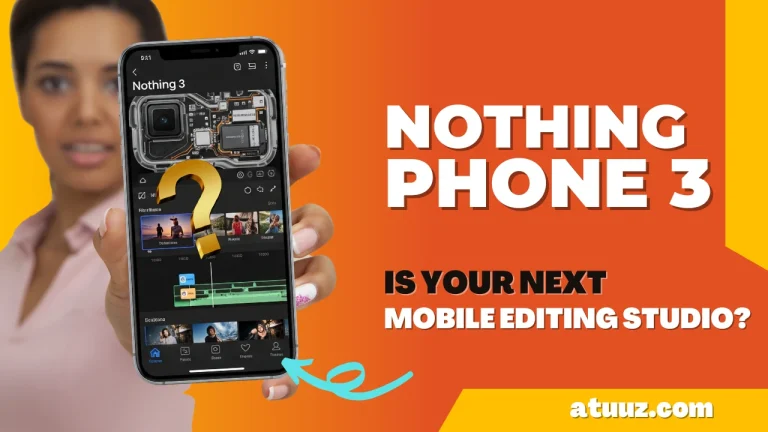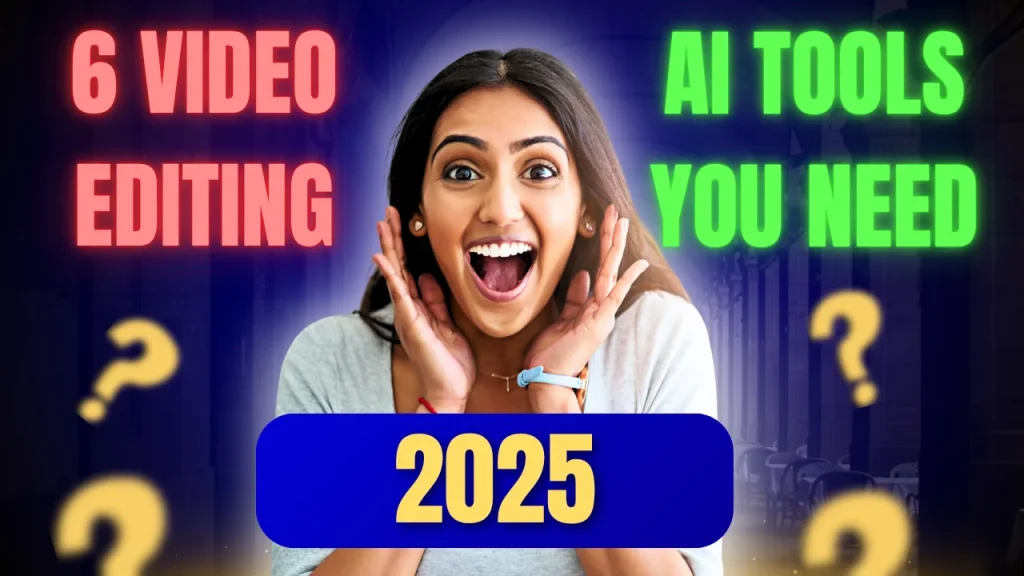
Is the Nothing Phone 3 Your Next Mobile Editing Studio?
The modern content creator is perpetually in search of the ultimate all-in-one device. The dream is a single, pocketable tool that can capture breathtaking video, slice through complex multi-layer edits, and publish polished content to the world without ever touching a desktop. This quest has turned the high-end smartphone market into a battleground, not just of megapixels and gigahertz, but of entire creative ecosystems. Into this arena steps the Nothing Phone 3, a device shrouded in hype and defined by a transparent, minimalist design ethos that has captured the industry’s attention.
Promoted as the company’s “first true flagship,” the Nothing Phone 3 promises major performance upgrades and a refined software experience, all while aiming for a price point that undercuts the established titans from Apple and Samsung. It arrives with a compelling narrative of challenging the status quo.
Nothing Phone 3 Release Date and Price: Setting Expectations
The Nothing Phone 3 is confirmed to launch on July 1, 2025. This launch marks a significant step for the company, with wider availability in the US market directly through Nothing’s website and Amazon. As for the price, the Phone 3 is positioned as a ‘flagship-killer,’ with rumors suggesting a starting price of around $799 for the base model. A higher configuration with 16GB of RAM and 512GB of storage may cost around $899. In India, the price is expected to be in the range of ₹50,000 to ₹60,000. This pricing strategy places it well below the anticipated costs of its main competitors.
But for a video creator, aesthetic appeal is a secondary concern. The primary questions are rooted in performance and practicality. Can the Nothing Phone 3‘s hardware chew through 4K timelines without stuttering? Is its camera system a versatile tool for cinematic capture or just a point-and-shoot with a fresh coat of paint? Does its workflow empower creativity or introduce frustrating bottlenecks? This report moves beyond the spec sheet to conduct a rigorous, workflow-centric investigation, delivering a definitive verdict on whether the Nothing Phone 3 earns a coveted spot in a creator’s toolkit.
The Engine Room: Analyzing the Hardware for Video Production
A video editor’s workflow is one of the most demanding tasks for any computing device. It stresses the processor, memory, storage, and battery simultaneously. The Nothing Phone 3‘s hardware configuration reveals a series of deliberate choices that define both its strengths and its critical limitations for video production.
The Snapdragon 8s Gen 4 Heart: Power with a Purpose (and a Price)
At the core of the Nothing Phone 3 lies the Qualcomm Snapdragon 8s Gen 4 system-on-a-chip (SoC). This is a significant upgrade from the Phone 2’s processor and places the device firmly in the premium performance category. Early benchmark results from Geekbench show respectable scores, with single-core performance around 2,076 and multi-core performance hitting approximately 6,577. These figures suggest that the phone will handle demanding tasks, including scrubbing through 4K video timelines in editing apps like LumaFusion or CapCut, with considerable ease.
However, the choice of the “8s Gen 4” variant is a crucial distinction. It is not Qualcomm’s absolute top-tier chip, the Snapdragon 8 Elite, which is expected to power direct competitors like the Samsung Galaxy S25 Ultra. This positioning as a “sub-flagship” or “flagship-killer” processor is not an accident or a failure to compete; it is a fundamental strategic decision that shapes the phone’s entire value proposition. The top-tier SoCs are among the most expensive components in a modern smartphone. By opting for the 8s Gen 4, Nothing can achieve a highly competitive starting price, with the base model rumored to be around $799 and a higher-spec version at $899. This is significantly lower than the expected prices of the iPhone 16 Pro and Galaxy S25 Ultra.
This calculated trade-off has direct consequences for the high-end video creator. The Snapdragon 8s Gen 4 chipset lacks support for certain top-tier video features, most notably 8K video recording and 4K video capture at 120 frames per second (fps). For a video editor, this means the phone is intentionally designed to deliver 90% of the flagship experience for a fraction of the cost. The compromise translates to slightly longer export times on complex projects and the absence of the most demanding video formats, a bargain that many budget-conscious creators may be willing to make.
Memory, Storage, and the Potential Workflow Killer
To support its powerful processor, the Nothing Phone 3 is expected to offer generous memory and storage configurations. Leaks point to options with up to 16GB of RAM and 512GB of fast internal storage, likely using the UFS 4.0 standard. Ample RAM is critical for video editing, as it allows the device to hold large video files in active memory, enabling smooth multitasking between editing apps and other software without constant reloading. Fast storage ensures that importing clips into a project and rendering the final video are as quick as possible.
While these specifications are excellent, a potential bottleneck lurks that could severely impact a professional workflow. Multiple sources indicate that the phone may be equipped with a USB-C 2.0 port. This detail, if true, stands in direct contradiction to Nothing’s marketing of the phone as being “built for creators”.
The implications of this single specification cannot be overstated. A serious creator’s workflow often involves shooting on the phone and then transferring large, high-bitrate video files to a more powerful PC or Mac for final editing, color grading, and audio mixing in professional software like DaVinci Resolve or Adobe Premiere Pro.13 A single 10-minute 4K 60fps video file can easily exceed 4GB in size. The theoretical maximum transfer speed of USB 2.0 is just 480 Mbps. In contrast, the USB 3.2 standard found on competitors like the Samsung Galaxy S25 Ultra offers speeds of up to 20 Gbps.
This translates into a dramatic real-world difference. Transferring that 10-minute clip could take over two minutes on the Nothing Phone 3, compared to just a few seconds on a device with a modern USB port. For a creator offloading a full day’s worth of footage—which could be 50GB or more—this difference is not a minor inconvenience but a major workflow impediment. It introduces frustrating delays that can kill creative momentum. This cost-cutting measure, if implemented, would have a disproportionately negative impact on the very prosumer audience Nothing aims to attract, undermining its creator-focused credentials.
The Creator's Canvas: A Display for On-the-Go Grading
The visual interface for any editing work is the display, and here the Nothing 3 Phone appears to excel. It is slated to feature a large 6.7-inch LTPO OLED display with a 1.5K resolution. The OLED technology provides deep blacks, vibrant colors, and excellent contrast, making it an ideal canvas for reviewing footage and performing initial color adjustments.
The LTPO (Low-Temperature Polycrystalline Oxide) technology is particularly beneficial for creators. It allows the display to dynamically adjust its refresh rate, from a buttery-smooth 120Hz for fluid scrolling and playback down to as low as 1Hz for static content. This adaptability helps conserve precious battery life during long editing sessions. The 1.5K resolution, sharper than the 1080p panels on previous models, ensures that fine details in 4K footage are rendered crisply, which is essential for checking focus and clarity on the go.
Performance Under Pressure: Can It Handle the Heat?
Raw power is only useful if it can be sustained. The most processor-intensive task in a video workflow is the final export or render, which can push a phone’s SoC to its limits for extended periods. While the Snapdragon 8s Gen 4 is built on an efficient manufacturing process, early tests on other devices using this chip have shown a tendency for thermal throttling under sustained load. This means that as the phone heats up, its performance is automatically reduced to prevent damage, which in turn slows down the task at hand.
For a video editor using the Nothing 3 Phone, this could manifest in a noticeable slowdown during long renders. Exporting a quick, one-minute social media clip will likely be a breeze. However, rendering a 15-minute 4K YouTube video could cause the device to become warm and progressively extend the export time. The effectiveness of the phone’s internal cooling system—a detail not yet fully known—will be the critical factor in determining its real-world sustained performance. Every mobile device throttles to some degree, but a well-designed cooling solution can mitigate the impact and maintain higher performance for longer.
Through the Lens: A Creator's Guide to the Nothing 3 Phone Camera
A mobile editing studio is only as good as the footage it can capture. The Nothing 3 Phone introduces the most significant camera upgrade in the company’s history, with a clear focus on providing creators with a more versatile and powerful imaging tool.
Video Capabilities: Hitting the 4K Sweet Spot
The Nothing Phone 3 is expected to feature a formidable triple-camera array, with a 50MP main sensor, a 50MP ultrawide sensor, and, for the first time, a 50MP periscope telephoto lens. The front-facing camera is also rumored to be a 50MP sensor. This high-resolution consistency across multiple lenses is a welcome feature for creators who want to switch between focal lengths without a jarring drop in quality.
In terms of video, the phone is expected to record at up to 4K resolution at 60fps from its main cameras. This hits the sweet spot for the vast majority of online content creators. 4K 60fps provides a sharp, fluid image that is ideal for platforms like YouTube and looks excellent when downscaled for social media. The inclusion of a periscope telephoto lens with 3x optical zoom is a game-changer for mobile videography, allowing for genuine telephoto shots with natural compression and detail, a massive improvement over the often-muddy digital zoom of its predecessors.
However, as previously noted, the phone’s capabilities stop short of what true flagship competitors offer. It lacks the 8K recording found on the Samsung Galaxy S25 Ultra and, more importantly for creative flexibility, the 4K 120fps slow-motion option available on the iPhone 16 Pro.
The Pro Codec Question: Presets vs. Professional Control
For professional videographers, the most critical aspect of video capture is not just resolution, but the codec and color profile used. Professionals rely on flat or “logarithmic” (LOG) video profiles to capture the maximum amount of dynamic range from the camera’s sensor. This flat, low-contrast footage provides the ultimate flexibility for color grading in post-production, allowing the editor to precisely control the final look and seamlessly match footage from different cameras.
Nothing has taken a different approach. While the phone’s “Expert Mode” supports RAW capture for still photography, there is no indication that it will support LOG or RAW video recording. Instead, Nothing has introduced a feature called “Camera Presets”. This allows a creator to import Look-Up Tables (LUTs)—which are essentially pre-made color grades—and apply them directly in the camera app. This means the creator can see the final, stylized look in the viewfinder before they even press record.
This is a clear philosophical choice that prioritizes aesthetic and speed over flexibility. It caters to the social media creator or vlogger who wants to achieve a specific, consistent “vibe” for their content instantly, without the time-consuming process of manual color grading. It effectively eliminates a step from the workflow. However, by “baking in” the color grade during capture, it removes the latitude that professionals require. This makes the Nothing 3 Phone a powerful tool for creating stylized content quickly, but a less suitable choice for high-end productions where precise color control and integration with other professional cameras are paramount.
The Complete Workflow: From "Action!" to "Export"
Evaluating a device for video editing requires simulating the entire creative process, from capturing footage to exporting the final product. The Nothing 3 Phone suitability depends heavily on the specific workflow a creator employs.
The All-in-One Mobile Workflow
For creators who produce content entirely on their phone—a common workflow for TikTok, Instagram Reels, and short-form YouTube content—the Nothing 3 Phone is poised to be a powerhouse. The workflow would involve shooting clips with the versatile 50MP cameras, perhaps using a Camera Preset for a stylized look, and then importing that 4K footage directly into a capable Android editing app like LumaFusion, CapCut, or Adobe Premiere Rush.
Based on the power of the Snapdragon 8s Gen 4 chipset and the phone’s generous RAM, scrubbing through a multi-track timeline, adding titles, making cuts, and performing basic color adjustments should be a fluid and responsive experience. The large, high-quality 6.7-inch OLED screen provides an excellent preview monitor for these edits. Even the less powerful Nothing Phone 2 was praised for its ability to handle 4K editing in CapCut with minimal slowdowns and good thermal management. The Phone 3, with its superior hardware, will undoubtedly be an even more capable mobile-only editing machine, perfectly suited for the demands of the social media creator.
The Hybrid Phone-to-PC Workflow
The story changes for creators who use a hybrid workflow, such as YouTubers who use their phone as a primary or secondary camera and then edit on a desktop. This is where the potential inclusion of a USB-C 2.0 port becomes a critical failure point.
Consider this practical scenario: a vlogger finishes a day of shooting and has accumulated 50GB of 4K 60fps footage on their Nothing Phone 3. To begin editing in Premiere Pro on their laptop, they must first transfer these files. With the sluggish 480 Mbps speed of USB 2.0, this transfer would take over 20 minutes under ideal conditions. In contrast, using an iPhone 16 Pro with its faster USB 3 port, the same transfer could be completed in under five minutes. This isn’t just a minor delay; it’s a significant interruption that breaks the flow of the creative process. For anyone regularly working with large video files, this bottleneck could be a frustrating and decisive deal-breaker.
Powering a Full Day's Shoot
Video creation is one of the most battery-draining activities a smartphone can perform. A full day of shooting, reviewing footage, and on-the-go editing requires substantial battery endurance. The Nothing Phone 3 is rumored to pack a large 5,150mAh battery, a healthy upgrade from the 4,700mAh cell in its predecessor.
This large capacity, combined with the power-saving features of the LTPO display and the relative efficiency of the Snapdragon 8s Gen 4 chip, should provide enough power to get through a moderate shoot day without needing to constantly hunt for a power outlet. Furthermore, the phone is expected to support very fast charging, with rumors pointing to either 65W or 100W wired charging. This is a massive advantage for creators, as it means a quick 15-20 minute top-up during a lunch break could provide hours of additional shooting time. This robust battery and charging system is a clear and significant strength for the device in a video production context.
The Showdown: Nothing Phone 3 vs The Mobile Video Titans
To truly understand the Nothing 3 Phone position in the market, it must be compared directly against the devices that define the high-end mobile video landscape: the Apple iPhone 16 Pro and the Samsung Galaxy S25 Ultra. This comparison reveals that each device targets a different type of creator with a distinct set of priorities.
The following table breaks down the key specifications relevant to a video creator, highlighting the strategic trade-offs between the three competitors.

Analysis vs. iPhone 16 Pro: The iPhone remains the gold standard for serious mobile filmmaking, and the comparison highlights why. The iPhone 16 Pro’s ecosystem is built for a professional workflow. It offers ProRes LOG recording, a codec that provides maximum flexibility in post-production and is a standard in the film industry. It can capture stunning 4K slow-motion at 120fps, a feature the Nothing Phone 3 lacks. Its fast USB-C port facilitates rapid file transfers, and its A18 Pro chip is a performance beast. Critically, the deep integration with professional desktop software like Final Cut Pro creates a seamless workflow that the Android ecosystem cannot fully replicate. The Nothing 3 Phone cannot compete on these professional-grade features.
Analysis vs. Samsung Galaxy S25 Ultra: The Galaxy S25 Ultra competes on raw power and an expansive feature set. Its Snapdragon 8 Elite processor is unequivocally more powerful than the 8s Gen 4 in the Nothing Phone 3. It offers 8K video recording, which, while niche, is a feature that demonstrates its top-tier status. Furthermore, Samsung’s suite of Galaxy AI tools, such as the innovative Audio Eraser which can intelligently remove background noise from video clips, provides practical editing advantages that are unique to its platform. The Nothing Phone primary advantages over the S25 Ultra are its significantly lower price and its highly praised Nothing OS, which offers a cleaner, more minimalist software experience compared to Samsung’s feature-packed One UI.
The Final Verdict: Who Should Buy the Nothing 3 Phone for Video?
The Nothing Phone 3 is a device of calculated compromises. It is a stylish, powerful, and compelling smartphone that carves out a unique space in the market. Its suitability as a video editing tool depends entirely on the creator’s specific needs, workflow, and budget.
For the Social Media Creator (TikTok, Reels, Shorts): An Enthusiastic Yes. For the creator whose final product lives on vertical video platforms, the Nothing Phone 3 is an almost perfect tool. It possesses more than enough processing power to handle the short, snappy edits required for this format within apps like CapCut. The versatile triple 50MP camera system is excellent for capturing high-quality footage, and the unique, eye-catching design is a statement piece that aligns with a content creator’s brand. The professional workflow limitations—namely the slow USB port and lack of LOG video—are largely irrelevant for a mobile-only, fast-turnaround workflow. It delivers immense style and performance for its price point.
For the YouTuber / Vlogger: A Qualified Yes, with Caveats. This is the audience for whom the Nothing 3 Phone presents the most nuanced choice. As a value proposition, it is fantastic. The phone can comfortably shoot and edit high-quality 4K 60fps videos, which is the standard for most YouTube content. However, any creator in this category must be acutely aware of its two major limitations. First, the slow USB 2.0 port will be a recurring source of frustration for anyone transferring large files to a computer for a more advanced edit. Second, the lack of a LOG video profile limits flexibility in color grading and makes it more difficult to match footage with other cameras. If the budget is a primary concern and these compromises are acceptable, the Phone 3 is a powerful and uniquely stylish option that delivers flagship-level results for a mid-range price.
For the Professional Videographer / Filmmaker: A Clear No (as a primary camera). For professionals who need to integrate mobile footage into high-end commercial projects, documentaries, or films, the Nothing 3 Phone is not the right tool for the job. The absence of professional codecs like ProRes LOG and the cripplingly slow data transfer speeds make it unsuitable for a demanding, time-sensitive professional workflow. It simply cannot match the ecosystem and technical capabilities of an iPhone 16 Pro. However, it could serve as an excellent personal device, a director’s viewfinder, or a B-camera for non-critical shots where a specific, stylized look from the built-in Camera Presets is desired.
Ready to transform your Instagram content? Explore our Instagram Video Editing services, and more to stay ahead.



